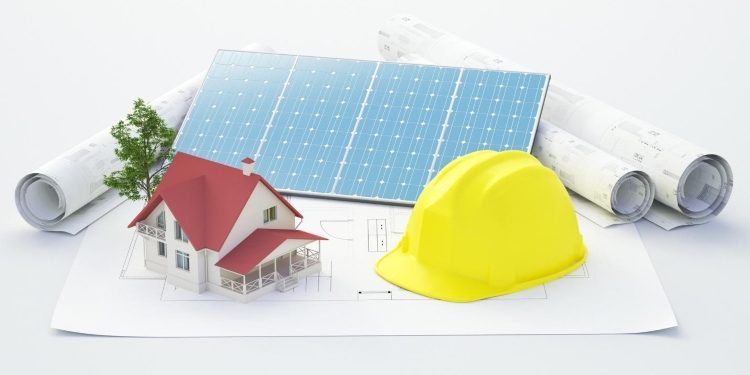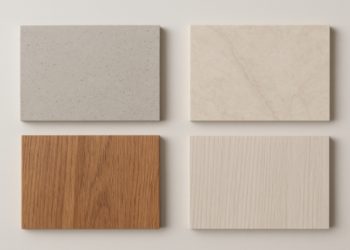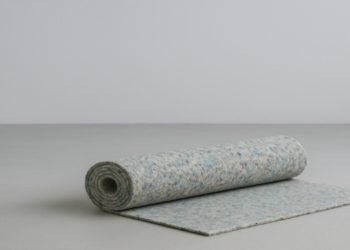Americans have a deep love of their homes.
However, some people are yearning for a renovation because they’re genuinely unhappy. Some are just inspired by the increase in home improvement shows on television. Whatever the reason is, it’s important to know how to go green during a home makeover.
Here is everything you need to know about how to plan an eco-friendly home makeover. Doing this can lighten your footprint while enjoying the benefits of a beautiful and functional home.
Identifying and Reducing Your Carbon Footprint
Planning the ultimate eco-friendly home makeover begins with identifying and reducing your carbon footprint. Start by assessing the current energy efficiency of your home. Note the areas of improvement that would reduce your energy consumption.
Inspect your appliances to make sure they are certified Energy Star products. Switch to LED lights in each room that use far less energy than their traditional alternatives.
Replace any old leaky windows and retrofit your HVAC system. You should also seal any potential air leaks to maximize efficiency. Install solar panels and switch to eco-friendly home products.
Use environmentally friendly paint to finish your new look. You can also choose sustainable furniture and flooring for a perfect eco-friendly makeover.
Using Eco-Friendly Home Design Ideas
Begin by researching sustainable materials and eco-friendly home design ideas. Take time to visit an eco-friendly home remodeling store. This ensures you have access to all the materials you need.
Consider green and recycled materials for your new paint and wall coverings. Look up grants for solar panels and think about how to implement them on your home. Do this for your flooring and windows as well. Plan to use organic, organic-based, and non-toxic products throughout your remodel job.
Backyard landscaping can also affect your eco-friendly home design. Having carefully positioned and selected plants can help reduce pollution and improve ventilation. You can also manage your waste better by using them for your garden.
Finally, create a comprehensive budget that includes your materials and the cost of labor. Make sure you add any other costs associated with the project.
Ways to Reuse and Recycle Existing Home Finishes
You should assess existing home finishes and features that can be reused or recycled.
Look for unwanted furniture, appliances, lighting, and other items. They can be donated to a charity or thrift store instead of sending them to the landfill.
You can also hold a yard sale. Other homeowners can find creative uses for items that may otherwise be discarded.
Examine current floorings such as wood, tile, and carpeting. Decide what portions can be salvaged and reused.
Any existing wallpaper can be carefully removed and set aside for future use. You can also simply reuse them in another room of the home.
For eco-friendly home decor ideas, broken tiles can be turned into mosaic art. You can also incorporate a crazy-cut floor design in your remodel. Wood panels can become hanging shelves.
Existing fixtures and cabinets can be refinished. They can also be re-stained with natural and non-toxic materials.
Lastly, any garden waste should be composted. This will reduce the need for additional soil and fertilizers. By implementing these eco-friendly suggestions, homeowners can enjoy an updated home without the guilty feelings.
Choosing Eco-Friendly Furnishings and Appliances
To begin, take inventory of existing furniture and appliances. Determine which items should be replaced with eco-friendly alternatives.
Consider selecting furniture made from natural or recycled materials. Examples are wood, rattan, hemp, and bamboo. For furniture upholstery, opt for organic fabrics like cotton and wool.
Appliances should be chosen for energy efficiency and performance. Whenever possible, pick ENERGY STAR-rated options.
Select two-in-one appliances such as a washer-dryer combo or a dishwasher-air dryer to minimize waste.
Additionally, install smart appliances. Smart thermostats will allow you to conserve energy. It can automatically adjust the temperature based on time and other settings.
Motion-activated lights will only turn on when it detects movement within the area. If no one needs the light in the covered area, it will be switched off.
Switching to Green Energy
When planning the ultimate eco-friendly home makeover, you should highly consider switching to green energy. Green energy is any energy source that is renewable, like flowing water, solar and wind power.
Make sure to research green energy options in your area, both with respect to the cost of the energy and the availability of the different sources. Consider making an investment in solar panels or wind turbines if possible.
They will reduce your carbon footprint and support green energy initiatives. Furthermore, it can help you save money through tax credits and utility savings and reduce your energy bills.
Don’t forget to look into how you can reduce your overall energy needs.
Finally, make sure to also look into other sustainability initiatives such as rainwater harvesting and composting. All these can help one minimize their environmental impact and reduce waste. With a few simple steps, you can make your home green and more eco-friendly with an ultimate eco-friendly home makeover.
Using Low-Flow Showerheads and Faucets
When planning the ultimate eco-friendly home makeover, it is important to consider all aspects of the home, including the use of low-flow showerheads and faucets.
Low-flow showerheads and faucets use less water per minute than the traditional models. This saves an average of 50-75 percent over conventional models. By reducing the amount of water used in the shower or the sink, individuals can help conserve water and save on their monthly water bills.
It’s important to buy low-flow models that are rated for their efficient water performance. These models are available with all types of water-efficient features, such as sensors and adjustable flow rates.
Installing low-flow showerheads and faucets is simple. They can literally be done in minutes! In addition, consider using natural materials such as stone, cork, and bamboo when possible.
Build Your Eco-Friendly Home!
The ultimate eco-friendly home makeover begins with thoughtful planning. Start by researching eco-friendly materials and consider which upgrades will be both environmentally and cost-friendly.
Don’t forget that small changes can add up to a big difference – let’s make the future better together! Start your eco-friendly home makeover now.
For more home improvement tips and ideas, browse our blog!
David Prior
David Prior is the editor of Today News, responsible for the overall editorial strategy. He is an NCTJ-qualified journalist with over 20 years’ experience, and is also editor of the award-winning hyperlocal news title Altrincham Today. His LinkedIn profile is here.











































































